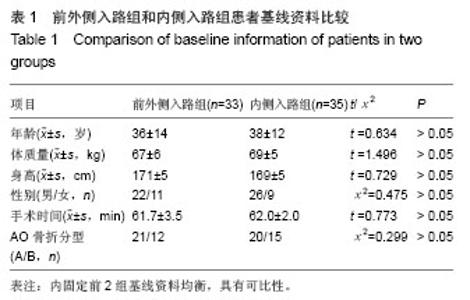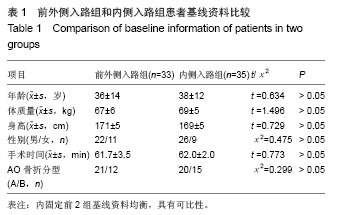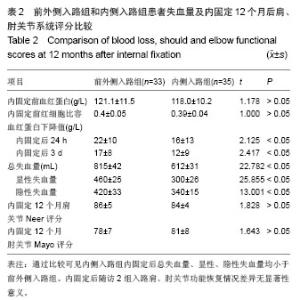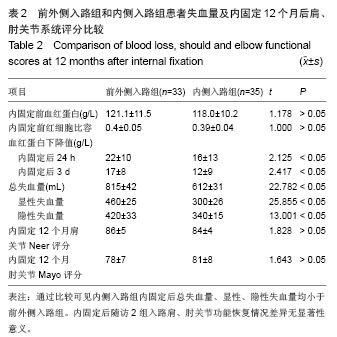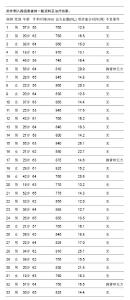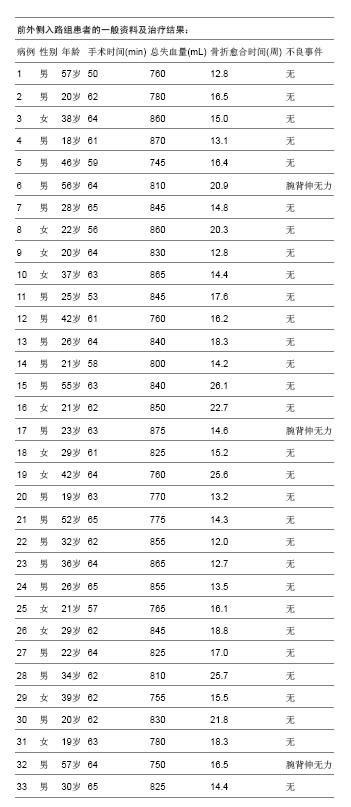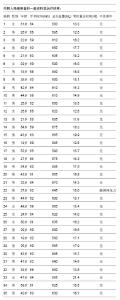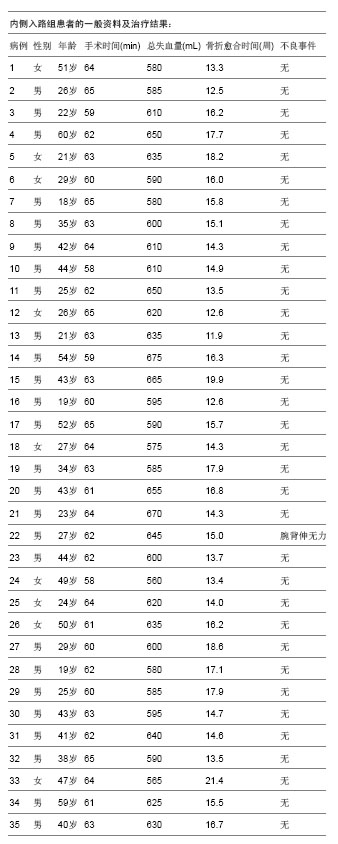| [1]杨晓荣.锁定加压钢板和动力加压钢板治疗肱骨中下段骨折的临床疗效观察[J].中国医药导报,2012,9(20):25-27.[2]Day CS,Yeh AC, Franko O,et al.Musculoskeletal Medicine: An Assessment of the Attitudes and Knowledge of Medical Students at Harvard Medical School.Acad Med.2007;82(5): 452-457.[3]Niall DM, OMahony J,McElwain JP.Plating of humeral shaft fractures-has the pendulum swung back? Injury Nutr. 2004; 35(6):580-586. [4]Antony DJ, Justin ER, William TO, et al. Outcome of nonoperative vs operative treatment of humeral shaft fractures:a retrospective study of 213 patients.Nutrition. 2010;33(8);doi:10.3928/01477447-20100625-16.[5]Neer CS II.Displaced proximal humeral fracture:Part I classification and evaluation.J Bone Jiont Surg(Am). 1970;52(6):1077-1089.[6]Morrey BF,Chao EY.Functional evaluation of the elbow//Morrey BF,ed.The elbow and its disorders). Philadelphia: WB Saunders ,1985:73-91.[7]Gross JB.Estimating allowable blood loss:corrected for dilution. Anesthesiology. 1983;58(3):277-280.[8]刘云鹏,刘沂,于洪祥,等.骨与关节损伤和疾病的诊断分类及功能评定标准[M].京:清华大学出版社,2002:71-73.[9]Sehat KR, Evans R, Newman JH. How much blood is really lost in total knee arthroplasty? Correct blood loss management should take hidden loss into account. Knee. 2000;7(3):151-155.[10]Roscncher N, Kerkkamp HE, Macheras G. et al. Orthopedic Surgery Transfusion Hemoglobin European Overview(OSTHEO)Study:blood management in elective knee and hip arthroplasty in Europe.Transfusion. 2003; 43(4):459-469.[11]覃健,余存泰,徐中和,等.全髋关节及全膝关节置换术后隐性失血的临床影响[J].中华骨科杂志,2006,26(5):323-326.[12]荣国威.骨与关节损伤[M]. 3版.北京:人民卫生出版社,2001: 553-555.[13]姚保兵,王文德,李宗宝,等.前方入路钢板前置内固定治疗肱骨中下段骨折[J].中华创伤骨科杂志,2009,11(1):83-84.[14]杨拯,袁梦郎,邱有波,等.闭合性肱骨干骨折患者小夹板外固定与植入物内固定治疗比较的Meta分析[J].中国组织工程研究与临床康复, 2010,14(35):6487-6490.[15]艾进伟,韩叶萍,李沛,等.外固定支架能否成为治疗肱骨干骨折的理想选择[J].中国组织工程研究,2013,17(17):3208-3215.[16]李连华,王浩,张妍,等.钢板和髓内针固定治疗成人肱骨干骨折的系统评价[J].中国组织工程研究,2013,17(39):6970-6977.[17]Niall DM,O'Mahony J,McElwain JP. Plating of humeral shaft fractures-has the pendulum swung back? Injury. 2004; 35(6): 580-586.[18]Bhandari M,Devereaux PJ,McKee MD,et al.Compression plating versus intramedullary nailing of humeral shaft fractures:a meta-analysis. Acta Orthop. 2006;77(2):279-284.[19]Clavert P,Adam P,Bevort A,et al.Pitfalls and complications with locking plate for proximal humerus fracture.J Shoulder Elbow Surg. 2010;19(4):489-494.[20]Dayez J. Internal screwed plate for recent fractures of the humeral diaphysis in adults. Rev Chir Orthop Reparatrice Appar Mot. 1999;8(3):238-244.[21]叶蜀新,林海,刘兵,等.两种钢板内固定治疗肱骨中下段骨折临床分析[J].中国骨与关节损伤杂志,2012,27(1):64-65. [22]胡长青,闫厚军,付贯中,等.臂内侧切口行肱骨骨折内固定15例报道[J].河北北方学院学报: 医学版,2010,27(6):17-18.[23]兰俊,季卫平,何斌,等.接骨板前内侧固定治疗肱骨中下段骨折的临床疗效[J].实用医学杂志,2011,27(1):79-81.[24]危杰,刘璠,吴新宝,等译.骨折治疗的AO原则[M]. 2版.上海:上海科学技术出版社,2010:445-456. |
